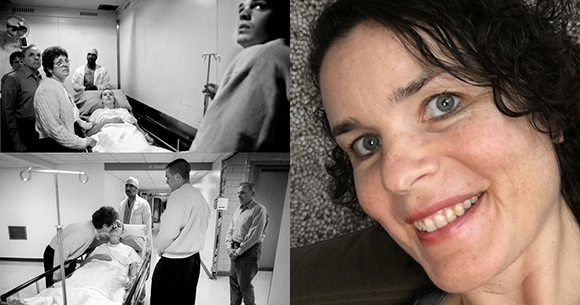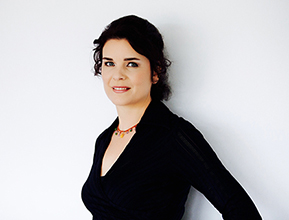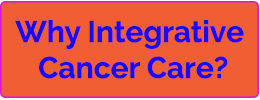
On March 18, 2017, I became a 19-year brain tumor survivor. I am grateful beyond grateful to be here. As I reflect upon my extensive journey, I continue to focus on being present and creating a vision for the future. Through my meaning and purpose, portions involve education and advocacy.
I feel compelled to share this story I wrote years ago, and never published until now. The story conveys some of my experiences as a young adult with a brain tumor, my first awake brain surgery, and how I entered a new world. Although many changes have occurred since then—in my personal transformation, the brain surgical approach, and process—the journey may offer some insights for people enduring challenging situations. Moreover, as I engaged in an evolving healing process, this story also provides details into my calling.
I woke up before 5 a.m. on April 22, 1998, the morning of my brain surgery. Since I was unable to remain in bed, I sat in my hospital bedroom window and peered into the sky, trembling inside like a baby wanting to be held and turning to watch the clock with time ticking away.
My National Institutes of Health (NIH) neurosurgeons entered the room at 6:30 a.m. Two of them placed white circular markers on my shaved head to guide brain mapping during the surgery.
During the process of markers applied to my head, my parents and brother, John, arrived. With brave faces forward, my parents could not completely adjust their gaze to me, their twenty-four-year-old girl in a hospital gown about to have brain surgery. John, only twenty, engaged me in conversation, paced the room, or stood against the wall.
Monica, my nurse who was one year younger than me, approached my bed with a ten-inch needle of morphine. She lifted her arm and plunged the needle down into my leg. I screamed and then sobbed, with some relief in releasing my tears.
Time moved faster. Transferred to a gurney, I was moved into the hallway, and toward the elevator. My parents and John followed behind. Inside the elevator traveling to the basement, our eyes watched the lighted numbers and letters— 5, 4, 3, 2, 1, B. It was almost time to say goodbye.
Outside the elevator, the hospital attendant navigated me around a corner toward the operating room. We stopped.
“You can’t go any further,” he said to my parents and John.
I leaned up to hug and kiss my family. My mother held my hand. I don’t remember making eye contact. I do not remember talking. I only remember that fear dwelled in every ounce of my being.
“We need to go,” the attendant stated as he gently pushed my gurney.
Still holding my hand, my mother walked a few paces with me as the gurney moved away. She released my hand as I passed through two large doors.
The attendant pushed me into the operating room waiting area. Nearby, a young couple held a baby dressed in a hospital gown. My tears stopped. I felt pain for a young child about to have surgery, and felt grateful for myself to have lived over twenty-four years before a health crisis.
The anesthesiologist approached me and asked if I wanted the catheter inserted before I entered the operating room and given anesthetics. I said yes. He left for several minutes and returned with plastic tubing. “I’ve changed my mind,” I said. “Do it after I’m asleep.”
In the operating room at 7:45 am, I was lifted onto a cold, metal table. The chilled air distracted me for a moment until my vision wandered to the equipment around me. The anesthetics quickly flooded into my veins. My awareness dimmed. My eyes shut.
A knife cut into my scalp to elevate a horseshoe-shaped flap that rested over my left ear during the surgery. A saw drilled through my skull along the horseshoe and above my ear to create a rectangle. The rectangular portion of my bone was removed for the procedure.
A shift in drugs allowed me to awaken with my skull cut open and my brain exposed to the air. I could not feel my head. A blue sheet draped over my entire body and offered only a small window revealing a television screen, my neuropsychologist, and a nurse seated in a metal chair. Behind me were my neurosurgeons. Several other people came in and out of the operating room.
The brain tumor was located in my left temporal lobe, the center of speech, memory, and hearing. My doctors prepared for cognitive testing and mapping to guide their delicate removal of brain tumor matter while avoiding critical brain tissue.
I watched a red television screen that provided the visual images for both verbal and memory testing. I had to look at the television screen and verbally identify images. My neurosurgeons worked with my neuro-psychologist and me to map the parts of my brain they could and could not remove in order to preserve cognitive functions. I even looked at the images, but said them with my eyes closed. It was hard to stay awake.
The speech and language testing were performed several times throughout the day as my neurosurgeons cut into and around the tumor. They also worked to remove a margin of surrounding brain tissue. Since glioma tumor cells can branch out like spider webs into what appears as healthy tissue, my neurosurgeons tried to remove more brain matter if possible. In the midst of their cutting, my neurosurgeons evaluated the risk-benefit ratio to decide how much tissue to remove.
“Violin and cherry,” I said peering at the red television screen. The image changed again and my eyes closed.
My neuropsychologist grabbed my hand, “Stay awake.”
I squeezed his fingers and focused my squinted vision. A building appeared on the screen. “Chaahh,” I slurred. “Chuurrcchh and …” I couldn’t recall the previous image. I couldn’t remember it was a violin.
“We’re almost done,” shouted one of my neurosurgeons from behind the blue sheet.
A visible 2.3 by 2.2 by 1.5 cm brain tumor was removed. The speech and memory testing also guided my neurosurgeons to cut out approximately one centimeter of surrounding brain tissue minus the section directly above the tumor. My speech area was lower in my temporal lobe than the average person. Since my words became slurred as they poked certain parts of my brain, my brain surgery team determined that cutting too much would compromise my ability to use my speech and memory.
A critical component of my surgery at NIH was participation in a clinical trial evaluating infrared imaging. My neurosurgeons and other team members used my brain in their study with several dozen patients. For over two hours, they tested it and how the infrared camera could detect changes in portions of my brain comparing tumor and healthy cells. If infrared imaging could identify between my tumor and healthy brain tissues by measuring the temperature of the top surface brain layer, then the camera might help identify what portions could and could not be removed. The clinical trial’s long-term goal was to assess if intraoperative infrared imaging would be able to define the margins of a tumor for accurate resection while preserving contiguous functional brain tissue.
After the testing was completed, I tried to recite a poem I wrote entitled The Abyss. “Stagnant on the surface, electrifying echoes of a dead calm,” I began. My mind blanked. The surgical team listened as I started the poem aloud again, but I lost the words. Too exhausted, I could not find the words.
My neuropsychologist told me he was leaving for the day, I asked him to give my family a message. I wanted him to tell my parents and John that I loved them and that I was okay. I started to cry.
Through the surgery, I asked about the time—1 pm, 4 pm, 8 pm. I tried to rest calmly during parts of the 12-hour procedure when I was awake, and not having speech and memory testing. I listened to the clamoring of the equipment and my neurosurgeon’s firm requests for specific instruments. I admired the funky socks worn by the nurse across from me and wondered why she looked so bored. I wanted to chat with her, but the room was so loud no one could hear me except during testing. Everyone focused on his or her individual roles in the procedure. I wondered if anyone thought about how I was feeling, and that I was scared.
I was not in pain during the procedure, and I told that to my neurosurgeons. But toward the end, I felt a sharp sensation in my head. As I screamed, I heard them say they were finished. I quickly fell asleep.
Finishing the procedure, my doctors carefully positioned the removed portion of my skull back onto my head. Titanium plates, resorbable sutures on the subcutaneous tissue, and staples on the skin edges were applied to cultivate mending.
I woke up again being pushed out of the operating room. My neurosurgeon John Heiss, MD stood at the door. I reached up and grabbed his hand. I looked into his eyes with gratitude. This part was over.
In the Intensive Care Unit (ICU), I struggled for consciousness as the doctors and nurses plugged me into a wall of machines. My mental and physical exhaustion only permitted a brief visit with my parents and brother. Through the night, in my hospital bed, I had many thoughts meandering. My head had a loud clicking sound that constantly continued. My heart skipped a beat every few minutes causing me to gasp for air. My jaw could hardly open. My entire right leg was numb. I asked why these things were happening and when they would stop. Nobody had an answer. Although exhausted, I could not sleep.
After two nights in the ICU, I returned to my hospital room with eighteen flower arrangements, packages with stuffed animals and other treats, and more beautiful cards to my already growing pile post-surgery. I had a constant stream of visitors. Various family members, co-workers, other close colleagues, karate buds, and many additional friends. From the hospital, I reflected on so many wonderful people in my life.
My healing immediately began on many levels. Faster than I thought was possible, physically I learned to walk again from my bed to a chair in the room, the bathroom, hallways, and short walks outside of the building. Over time, my energy increased as my brain rerouted, cells repaired, bones mended, jaw slowly unlocked, heart trembled, body acclimated in a new terrain, my soul became more present in my identity, spirit held me.
My doctors told me the results of my post-operative magnetic resonance imaging (MRI) scan, which indicated complete tumor removal. NIH’s pathologist determined I had a grade II oligodendroglioma. Learning some of the survival statistics, I felt disconnected and dissociated from numbers translating my lifespan into a range of years. I did not know how to address the information associated with my mortality.
I left the hospital six days after surgery fearful of the responsibility to care for myself. My mother stayed with me for two weeks, and I relearned how to let her take care of me. We had our meals together and went on daily excursions. Even with time together, we did not really talk about what was happening on the inside.
At the hospital weeks later for a check-up, my neurosurgeons told me that I looked great. They smiled at me and were probably quite proud. I shined to them with tremendous gratitude. Yet, I had some challenges. My right leg and arm were still numb. Hearing out of my left ear was dulled. My jaw hurt. I had unexplainable aches in my body. Strong emotions ebbed and flowed. And my brain functions were not the same. Although they did cognitive testing before the surgery, post-operative tests were not called for, and I did not know to request it.
Before I left NIH, my neurosurgeon Robert Rosenbaum, MD looked me in my eyes. He said, “Now, I want you to start following the research about brain tumors. Your doctors have knowledge. You also need to become informed and be on top of it. You need to become your own advocate.” I had no idea what that meant.
One month after my surgery, I returned to my job in Congress. No obvious signs showed what I had endured, aside from the scarf on my head protecting my slightly swollen and carefully mending flesh. However, underneath my scarf were various fragmented aspects of myself struggling to define all of the changes. I tired easily, and my brain actively rerouted. Neurons were constantly making new connections as my brain worked to function in its new form. My head and heart ached as I realized some physical changes were sometimes minor in comparison to intense thoughts and feelings— the trauma related to my brain surgery; the emotional pain from learning about the devastation associated with brain tumors; and, the relentless battle to trust that I would heal enough to find deeper happiness.
Woven through my physical, mental, and emotional pain was my soul and spirit in pursuit to help me develop a tender relationship with my mortality. The communion did not occur to emphasize how or when I would die in this lifetime. Instead, the process slowly gave me insights about cycles of life, support from the other side during life and death, the visible and invisible, reincarnation, angels, and more about the soul and spirit. The reality shows that death is a part of life. And each person is dying in each and every moment. American culture does not really talk about these topics. By looking at death in the face, and dancing with it cheek to cheek, life completely transforms. On the other side of fear is pure freedom.
Levels of myself— brain, body, heart, mind, soul, and spirit— were hungry for help in my healing. My holes led me on a quest to find my wholeness. From my inside out, I knew that cancer care required more than treatments to the cancer diagnosis, and instead must include the whole person. That became my healing journey and life’s work.
If you would like to learn more about strategies to deal with brain tumors, other types of cancer, conventional treatments, integrative cancer care for the whole person, and many forms of support in your cancer journey, contact me today for personalized cancer coaching. Find how cancer coaching works here.





